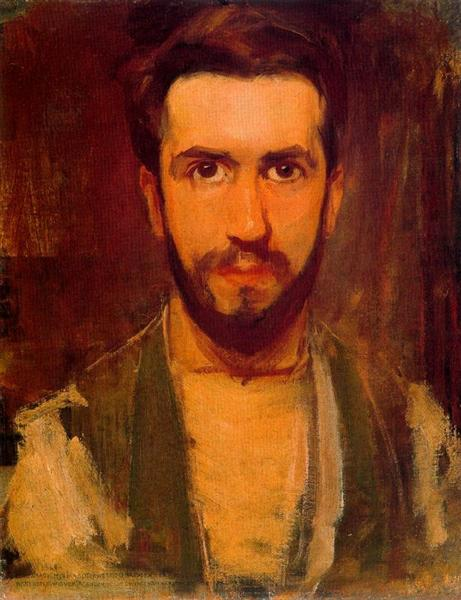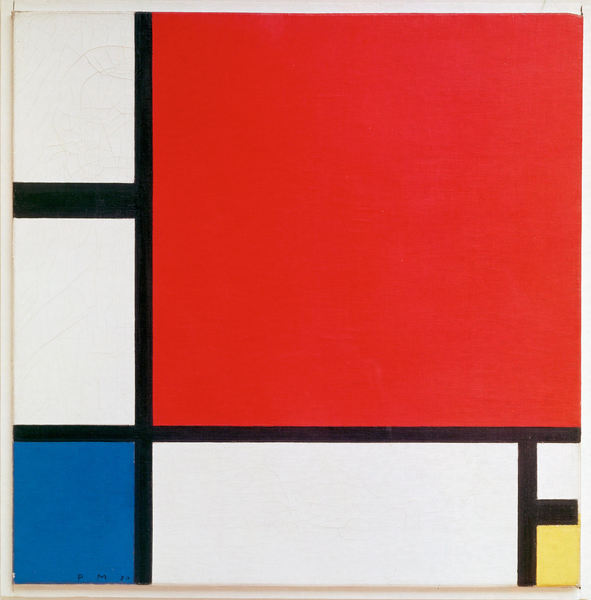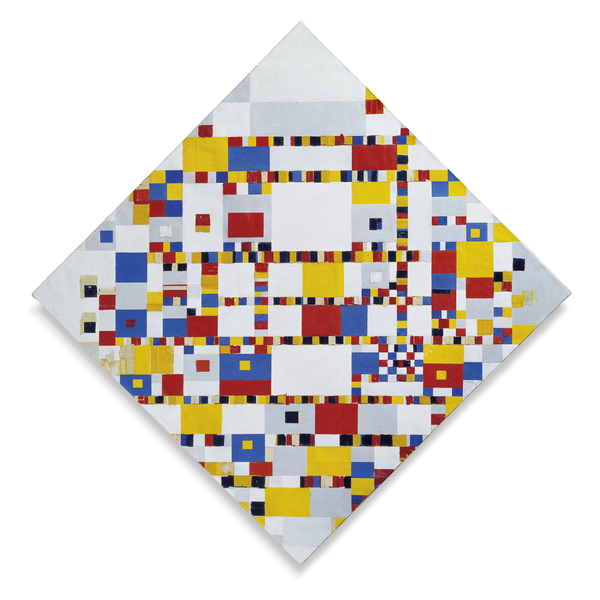

Self-portrait by Piet Mondrian
Piet Mondrian was a Dutch painter who had a major influence on 20th century abstract art. He began his career with stylized, realistic paintings of landscapes and people, and ended it with geometric abstraction in a style he helped invent: neoplasticism.
He was born in 1872 in the Netherlands. Throughout his life he lived in the Netherlands, France, England, and finally New York in the United States, where he lived until his death in 1944.
His family were Christian protestants (Calvinists), and his uncle was a landscape painter. He got his start in art through the help of local artists and an art school. He adopted beliefs in theosophy, which is a religion that allows you to believe both theosophy and other religions.
His theosophy beliefs show through his art and writing about art. He wrote: "Art is higher than reality..To approach the spiritual in art..make as little use as possible of reality..Art should be above reality, otherwise it would have no value for man." He also wrote: "The position of the artist is humble. He is essentially a channel." His art was his attempt to be a channel or source of inspiration for pure beauty and harmony.
Mondrian contributed to the De Stijl art movement, which is Dutch for "The Style." De Stijl is also known as neoplasticism, or new 'pure plastic art.' Through it Mondrian attempted to create 'universal beauty'. For him and others, this meant using only the primary colors and shades; red, blue, and yellow, black, white, and gray, and the two primary directions: horizontal and vertical.
The De Stijl movement was a reaction to art works which many felt were too elaborate and complex.
Following are some of Mondrian's neoplastic works.

Tableua I, by Piet Mondrian

Composition II in Red, Blue and Yellow, by Piet Mondrian

Composition 10, by Piet Mondrian
In France, he saw art works of Cubism, which influenced his neoplastic grids of vertical and horizontal lines.
His work influenced a lot of other artists who worked in other art movements, for example Color Field painting, Abstract Expressionism and Minimalism, and even work outside the domain of painting, such as design, architecture and fashion.
In New York, his work became more intricate, free and expressive, such as in "Victory Boogie Woogie:"

Victory Boogie Woogie, by Piet Mondrian
Here is a post-neoplasticism art project kit (with pdfs of blank neoplastic grids).